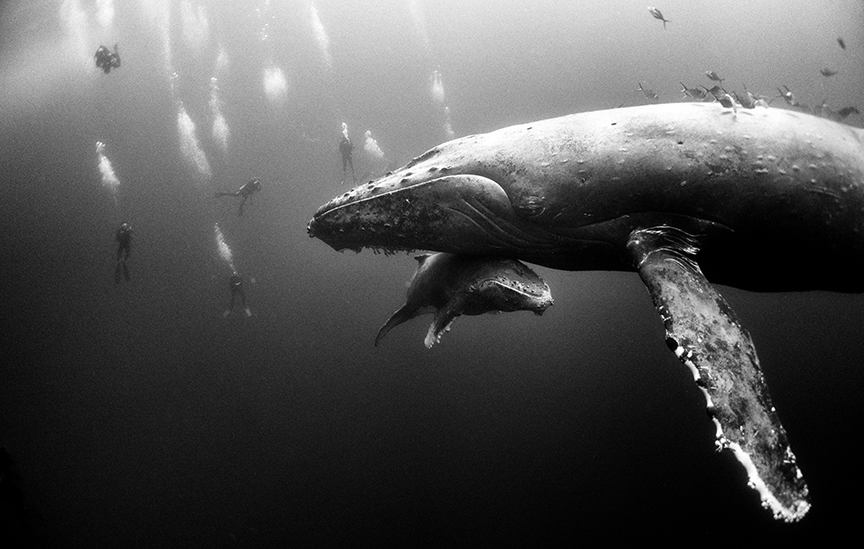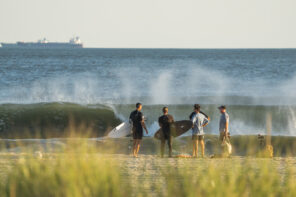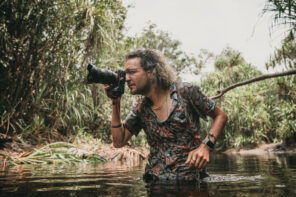Photographer Anuar Patjane Floriuk goes deep to give conservation in his country a fighting chance
To Anuar Patjane Floriuk, his camera is a tool. No different from his mask, fins and scuba tanks. To the rest of us, it’s only a tool in the way that Woody Guthrie’s guitar was a machine to kill fascists. A social anthropologist born and based in Central Mexico, Anuar says his camera is “a tool to create consciousness.” His first aim with his photography is as a document. That those documents are startlingly beautiful underwater photos that’ll knock the respirator out of your mouth isn’t beside the point. It is the point in a way.“I rely on the power of the document to show what is going on there, and the power of reality,” he says. The photographs show a side of the world few are ever fortunate enough to see. Anuar shares these images in the hope that they will speak the truth more loudly than any words, and give conservation efforts a voice. “If there’s an issue with, for instance, a weak policy,” he explains, “You can make people that are in positions of power turn around to say, ‘People are looking. They actually care.’ They can’t play dumb anymore.”
I rely on the power of the document to show what is going on there, and the power of reality.
These photographs of almost surreal undersea realms show a link between an image and an issue. Anuar spoke with Whalebone Magazine to shed a bit of light on what’s behind these rare perspectives of Mexico.
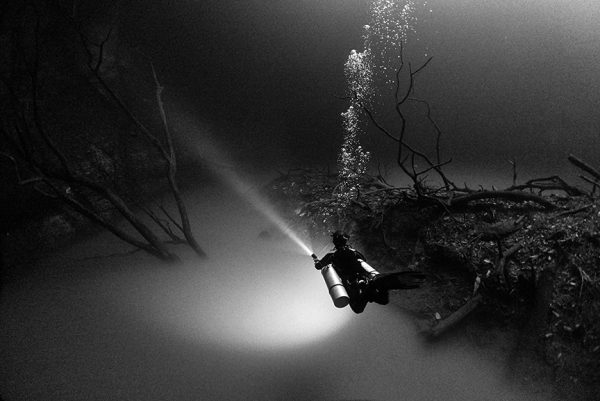
The Mayan Riviera
“The Mayan Riviera, with its remarkable cultural heritage, beaches and ruins seem to attract greater numbers of visitors every year. Few of them know the natural marvels right below them. That coastal area is connected with linked water-filled passages, and the entrance to this intricate system is what the Maya called Dzonot (what we call cenotes). In many of these passages, many mind-blowing archaeological discoveries have been made, including the world’s oldest, most complete and genetically intact human skeleton called Naia who is between 12,000 and 13,000 years old—he migrated all the way from Beringia.
Few of them know the natural marvels right below them.

“But it is necessary to know that now these caves—that still hold many archaeological mysteries and also an essential body of subterranean water for all the Yucatán Peninsula (essential for animals, us included, and plants)—could be permanently damaged by “The Mayan Train” (El tren Maya) that will pass over the cavern systems. The vibration of the train could be an issue that may collapse cave passages, and a further increase in tourism will pose a growing problem.
We Mexicans have a responsibility to protect these pristine places…
“Already sewage runoff is an issue in many of these places. If the shit can’t be contained, it will make its way through the underwater cave systems, polluting the water we drink and contaminating as-yet-undiscovered archaeological treasures. We Mexicans have a responsibility to protect these pristine places, but also foreign tourists have to be responsible and can put pressure on the tourism industry to encourage ecologically sustainable infrastructure. You can ask your hotel where all the sewage goes before you book your stay; let them know you care.”
Cabo Pulmo, Sea of Cortés
“A strong sea protection effort by national and international universities and NGOs is underway in the Sea of Cortés, Mexico; hopefully soon it will become a protected and regulated area where only small-scale fishing will be allowed in strategic areas and commercial fishing would be limited to very specific and regulated zones. It is a difficult endeavor with so many interests involved—local fishermen, commercial fishing, organized crime and a transnational market for endangered species, mining interests, NGOs and the government—all with very different visions of how the Sea of Cortés should be managed. But actually, we are at the point that there is not much left because fish have been so depleted in many areas. Surely, common ground can be found. If strategic zones are regulated, it would mean an increase in the overall amount of biomass in the sea. Fisheries, nature and tourism would all benefit from it. Consensus is the trick, and it is highly possible to achieve this. A small town called Cabo Pulmo already took this step and created a haven for many marine species. That’s where this image was taken.”
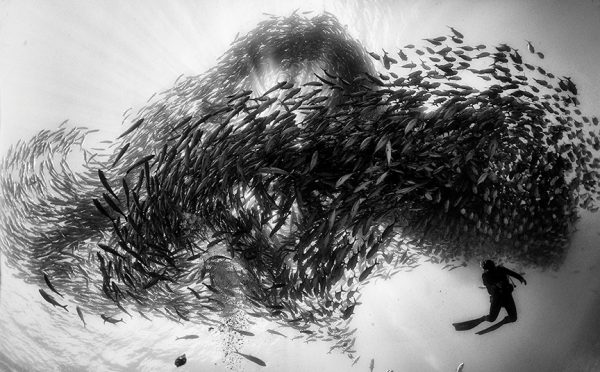
The Revillagigedo Archipelago, Pacific Ocean
“Far away from the mainland, about 450 miles from continental Mexico, the Revillagigedo Islands rise from the deep and give us some of the most amazing landscapes and interaction of species—that’s why some call them the Mexican Galapagos. During January, February and March, some humpback mothers that migrate yearly to the Revillagigedo Islands have encountered divers in the past while they raise their calves, and come back willingly and interact with us. Much research into this kind of curious interaction is still needed… Difficult to believe that some countries still hunt them for scientific purposes. But in Mexican waters, no one touches them.”

